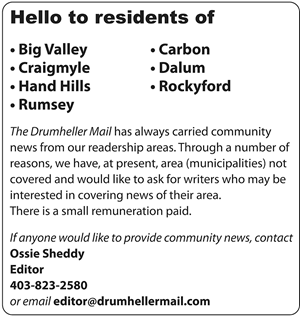
Kneehill County council passed a motion at the Tuesday, August 17 regular council meeting to pursue a feasibility study regarding providing water to residents east of the Town of Three Hills in rural Kneehill County.
In March 2021 a survey was sent to residents in the Three Hills East area, and administration was directed at the April 27 council meeting to explore water delivery options for the area. A total of five options were presented to council at the regular July 20 council meeting, and council directed administration to further explore four of these options.
“In the previous discussion, council had identified some options they wanted administration to look into,” said Kneehill County CAO Mike Haugen during the regular Tuesday, August 17 council meeting. “As part of that discussion, we did alert council to the idea some of these options would require us to do some engineering work, and that would require some funding.”
Professional services firm WSP was approached by the county to prepare a feasibility study to provide water services to area residents. The consultants will consider two delivery options-a full-flow water system and a stand-alone bulk water station-and review the serviceability of each option from three sources which were previously identified.
CAO Haugen explained, once these studies have been completed it will allow administration to build a business case and give a better cost estimate for the project.
“We do feel we have room within the operating budget,” CAO Haugen said during the meeting. “We’re just looking for council to give us approval to engage in the project.”
Haugen also explained the study will not provide “the whole picture,” but rather a “foundation point” for administration to begin building from.
Part of this will be to determine whether the county will require to hire a new water operator and anticipated revenues and cost recovery.
For the consultant to prepare the feasibility report will cost the county $21,710 plus applicable taxes.
Division 7 Councillor Kenneth King motioned to approve the consultation cost, saying it is “reasonable” for the county to consider going ahead with the study to provide more information to base further decision on a potential project; council unanimously approved the motion.
















